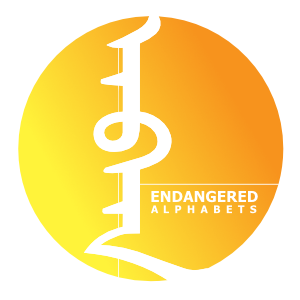The Twenty-Fifth Letter
Not exactly an endangered alphabet, but certainly a confused letter. Or two. A guest blog by Hans de Wolf.
 Do you know that there is a well-educated civilized country in north-western part Europe, with a very high literacy rate, of which the language is spoken by about 23 million people – but were there is a huge confusion about what the 25th letter of the alphabet is?
Do you know that there is a well-educated civilized country in north-western part Europe, with a very high literacy rate, of which the language is spoken by about 23 million people – but were there is a huge confusion about what the 25th letter of the alphabet is?That country is The Netherlands (where I live), and the language is Nederlands (called Dutch in Engish), my native language.
The confusion is about the 25th letter. In most cases it represents the [ɛɪ] sound.
Linguistically it is the ‘y’ (ypsilon). But when you are learning to read and writer at school, you learn that the 25th letter is the ‘ij’. Formally this is not a letter, but a digraph consisting of the letter ‘i’ and ‘j’. The Dutch language does not have any native words using the ypsilon – but of course we have borrowed a lot of words from other languages, like systeem (=system).
In the Dutch language the ‘ij’ bigraph is regard as a vowel – pronounced the same as the ‘ei’ [ɛɪ] letter combination sound in Dutch. This poses some problems even for native speakers, some words differ only in the use of ’ei’ or ‘ij’, sound the same, but have a completely different meaning (leider=leader, lijder = sufferer).
If you have to capitalize the ‘ij’ (at the beginning of a sentence, or a geographical or personal name both the ‘I’ and the ‘J’ are written in capitals. So, the river that runs through the city of Amsterdam is the IJ river, and the name of a coastal town is written as IJmuiden.
Note that the ij or IJ are something completely different than the y or Y with dots above them (like ÿ or Ÿ). The Dutch lowercase ij has two dots above it, the uppercase version IJ has none.
In acronyms or abbreviations the IJ is regarded as a single letter – but dictionaries sort it a two separate letters, between ih and ik. The telephone book regards the ij as the same as the y.
I have read that the ‘ij’ stems from a readability problem. Long ago the double-i (ii) combination was used for some sounds [i] phonetically. At that time the letter i did not have a dot. This made it difficult to distinguish the ‘ii’ from the ‘u’, especially when written in a ‘fraktur’ kind of letter. So the second ‘i’ of the ‘ii’ got a small loop at the bottom, making it similar to the lettter ‘j’.
Sometimes you can find traces that the letter ij in a word stems from ‘ii’ In such cases it is not pronounced as the [ɛɪ] sound, but as an [i]. An example of this is the word bijzonder, meaning ‘especially’.
There are special Unicode characters assigned to the ‘ij’ and the ‘IJ’, U+0132 and U+0133, and HTML contains IJ for ‘IJ’ and ij for ‘ij’ but the symbols are not part of the ISO 8859 standard for character encodings. Their use is discouraged for reasons of compatibility. In the past there were typewriters that had a special ‘ij’ key (which create the ‘ij’ digraph at the same width as any other single non-proportional letter, but today everyone is used to the QWERTY keyboard and just types a ‘i’ and a ‘j’.
Hans de Wolf, a longtime supporter of the Alphabets, has worked for over 30 years as a space engineer. Currently he works as a technical writer, and is interested – among lots of other things – in graphic design and typography.
Links:


March 4, 2023 @ 8:06 pm
A wikipedia with moe details about the IJ digraph is also available in Engish at https://en.wikipedia.org/wiki/IJ_%28digraph%29
July 2, 2023 @ 5:54 pm
I am curious why the IJ digraph as a letter is supported by so many European keyboards, when it was (supposedly) abandoned so long ago. Its situation is similar to the ĸ Kra letter in Greenlandic, which is supported by several European keyboards, even though Greenland abandoned the Kra 50 years ago.
People just won’t let go of the past, will they?
March 7, 2023 @ 8:17 am
Hans is a Legend 😀
March 7, 2023 @ 8:40 am
This sounds very fun and confusing. There’s a great book—part linguistic exploration, part memoir—that talks about Nederlans letters. It’s called “Alfabet/Alphabet” by Sadiq de Meijer.